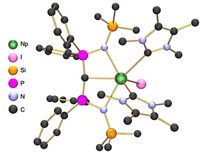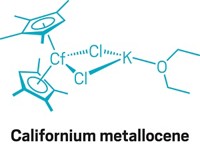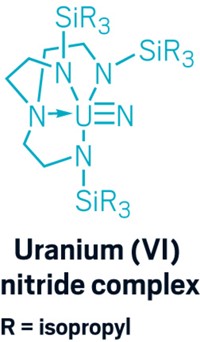Advertisement
Grab your lab coat. Let's get started
Welcome!
Welcome!
Create an account below to get 6 C&EN articles per month, receive newsletters and more - all free.
It seems this is your first time logging in online. Please enter the following information to continue.
As an ACS member you automatically get access to this site. All we need is few more details to create your reading experience.
Not you? Sign in with a different account.
Not you? Sign in with a different account.
ERROR 1
ERROR 1
ERROR 2
ERROR 2
ERROR 2
ERROR 2
ERROR 2
Password and Confirm password must match.
If you have an ACS member number, please enter it here so we can link this account to your membership. (optional)
ERROR 2
ACS values your privacy. By submitting your information, you are gaining access to C&EN and subscribing to our weekly newsletter. We use the information you provide to make your reading experience better, and we will never sell your data to third party members.
Radiochemistry
Thorium-thorium bonding marks actinide milestone
Unusual crystalline complex shows unexpected σ-aromaticity
by Mark Peplow, special to C&EN
September 2, 2021

Bonds between actinide elements are extremely rare, with barely a handful identified in fleeting or exotic circumstances. Now, researchers have created a fully-fledged crystalline complex containing thorium-thorium bonds, synthesized and isolated under ordinary experimental conditions (Nature 2021, DOI: 10.1038/s41586-021-03888-3).
Actinide-actinide bonds are predicted to be very weak. Compounds such as U2have been identified by spectroscopy of gas-phase molecules, or trapped inside a fullerene cage, for example, which hampers efforts to study their bonding and reactivity in detail.
Stephen T. Liddle of the University of Manchester and colleagues made the new compound by combining a thorium precursor with a tetrasilyl cyclobutadiene dianion—a powerful reducing agent. This formed a complex containing a cluster of three thorium atoms flanked by cyclooctatetraenyl ligands and bridging chlorides. The dark blue crystals decompose slowly at room temperature but remain stable at –35 °C.
The researchers compared crystal structure data and spectroscopy and magnetic measurements with quantum chemical calculations and determined that the thorium cluster contains a 3-center 2-electron bond, and that these delocalized electrons are σ-aromatic. “It’s pretty much the last thing that anyone expected,” Liddle says. “It underlines to me the capacity of the early actinides to really surprise.”
The researchers found that the complex acts as a strong reducing agent, causing CO2 to disproportionate, forming CO and a thorium carbonate compound. They now aim to create analogs of the complex with other actinides to look for trends in bonding and reactivity.





Join the conversation
Contact the reporter
Submit a Letter to the Editor for publication
Engage with us on Twitter